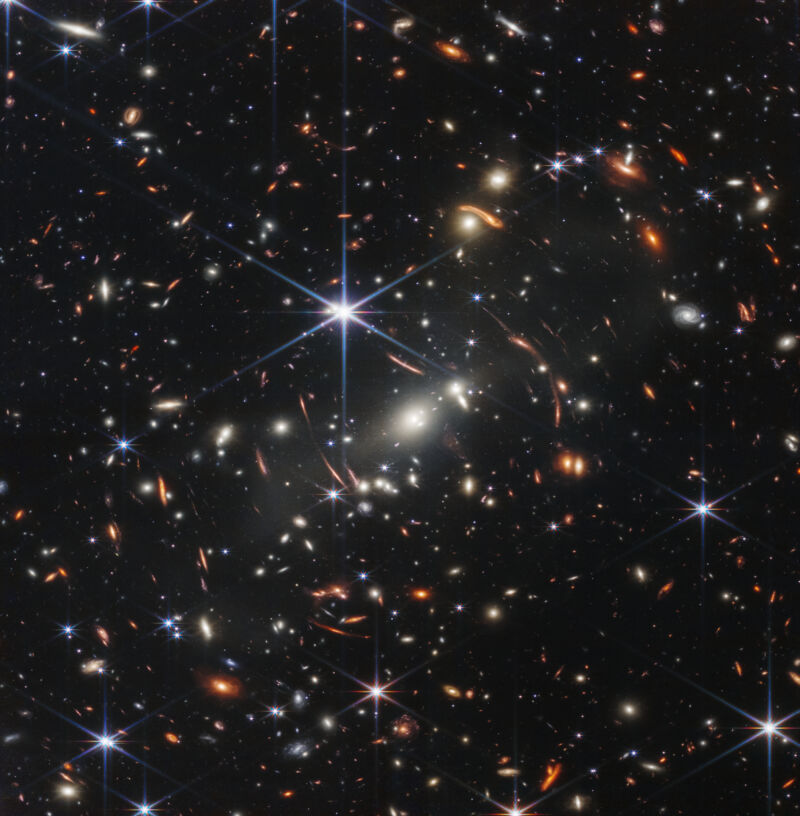Universe’s first galaxies unexpectedly large

Enlarge (credit: NASA, ESA, CSA, and STScI)
How soon after the Big Bang could stars and galaxies start to form? It has been a difficult question to answer, as much of the light from the first stars has been shifted deep into the infrared during the billions of years it has spent traveling to Earth. One of the design goals of the Webb Telescope was to create a telescope that could pick up this light and tell us something about the early history of the Universe. And initial data has been very promising, with astronomers seemingly racing each other to find the most distant galaxy yet observed.
Now, a new study looks into the properties of a set of distant galaxies, showing that one of them appears to be larger than the Milky Way at only 700 million years after the Big Bang. If the results hold up, then the number of galaxies of this size may be difficult to reconcile with the forces we think built the Universe.
Going deepThe technique for spotting early galaxies is fairly simple. The earliest stars and galaxies were embedded in a Universe filled with hydrogen atoms, which can be ionized if they absorb light at specific wavelengths in the UV range. This absorption creates a distinctive feature in the light arriving from distant galaxies. Over the billions of years it takes to reach us, however, that feature has been red-shifted by the expansion of the Universe so that now it appears deep in the infrared portion of the spectrum. If you can identify where it resides, then you can determine just how far away the galaxy is.